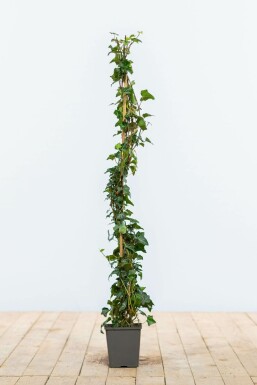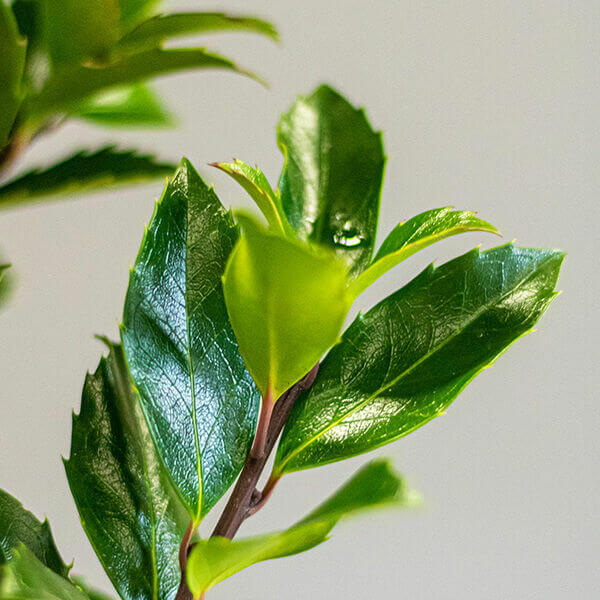Best Hedging Plants For Informal Borders
Best Hedging Plants For Informal Borders
Blog Article
Best Hedging Plants For Soft Borders
Enhance your garden's appeal with rich hedge varieties such as Yew (Taxus), Thuja, Laurel, Photinia, and Bamboo, celebrated for their structural integrity and environmental advantages.
Yew and Thuja supply evergreen coverage and winter season resilience, while Laurel provides quick growth and broad, fragrant leaves.
Photinia includes seasonal charm with its dynamic red foliage, and Bamboo provides a low-maintenance, serene ambiance.
These hedges enhance air quality, minimize sound, and create tranquil, private areas.
Correct planting, spacing, and maintenance guarantee energetic development and ecological harmony.
Check out how these lavish varieties can elevate your garden's charm and wellness.
Secret Takeaways
Change Your Garden With Lush Hedge Varieties
- Select Yew for its thick, evergreen development and unparalleled longevity.
- Select Laurel for its quick development and broad leaves, making sure fast privacy.
- Select Photinia for its lively seasonal foliage, which turns a striking dark red.
- Utilize Bamboo for a low-maintenance, winter-hardy hedge with aesthetic appeal.
- Space plants 2-3 per meter and prune routinely for ideal development and health.
Popular Hedge Plants
When changing a garden with lush hedge ranges, it's vital to consider popular hedge plants such as Yew, Thuja, Laurel, and Photinia due to their distinct qualities and advantages.
Yew (Taxus) is extremely respected for its durability and thick, green development, making it a prime option for sustaining landscapes.
Thuja is kept in mind for its evergreen foliage and robust winter season strength.
Photinia includes seasonal vibrancy with red leaves that darken in time, developing vibrant visual appeal.
Laurel offers rapid growth and aromatic, broad leaves, perfect for fast personal privacy.
Furthermore, Bamboo is an excellent choice for atmosphere, using a low-maintenance, winter-hardy choice that boosts the garden's visual with its sophisticated, swaying walking sticks.
These selections cater to a range of horticultural requirements and choices.
Advantages of Garden Hedges
Garden hedges use a wide variety of advantages, making them a valuable addition to any landscape. These natural barriers are cost-effective to implement and offer significant wind protection, boosting air flow and contributing to sound decrease. The dense foliage of hedges like Thuja and Beech ensures personal privacy by obstructing presence, producing a remote and peaceful environment.
Hedges likewise play an important role in microclimate guideline, offering a stable environment that promotes plant development and lessens temperature variations. Their complex leaf structures filter pollutants, enhancing air quality and contributing to a much healthier garden ecosystem.
Furthermore, hedges excel in sound reduction, soaking up and deflecting sound waves to lower ambient sound levels. This dual performance of providing both acoustic and visual privacy improves the total tranquility and visual appeal of any garden.
Planting and Upkeep Tips
For a successful hedge, careful preparation of the planting area is important. Make sure the soil has proper pH and drainage to support strong root advancement.
Space the plants properly for the picked species. Water the hedge regularly throughout its preliminary growth phase, adjusting as required with seasonal modifications.
Execute a methodical bug control and illness avoidance strategy, utilizing chemical or natural treatments when required. Routinely examine for aphids, termites, and fungal infections.
Apply mulch to retain moisture and reduce weeds. Seasonal pruning promotes thick development and air circulation, essential for plant health.
Following these guidelines will help you cultivate a lively, click here well-maintained hedge that enhances the appeal of your garden.
Spacing and Trimming Guidelines
Spacing and Trimming Guidelines
Proper spacing and trimming are essential for cultivating healthy, visually appealing hedges. Sufficient spacing guarantees each plant gets adequate nutrients, light, and air flow.
Follow these standards for ideal hedge upkeep:
- Spacing: Position hedge plants 2-3 plants per meter to motivate robust growth.
- Pruning Methods: Regular pruning is important for maintaining desired hedge height and shape. Trim new development in summer and cut back older wood during winter.
- Seasonal Care: Change cutting schedules and techniques according to seasonal requirements to guarantee plant health.
- Hedge Height: Routinely screen and trim to maintain the wanted hedge height and attain consistent aesthetic appeals.
Following these actions will guarantee your hedge flourishes, improving both the appeal and functionality of your garden.
Picking the Right Hedge
Selecting the Right Hedge
Choosing the proper hedge includes examining aspects such as mature height, foliage density, and environmental strength. Successful hedge plant choice needs understanding each species' development attributes and site-specific versatility.
For example, Yew (Taxus) offers outstanding durability and dense growth, while Thuja is noteworthy for its winter durability. Additionally, thinking about maintenance requirements is vital; fast-growing species like Laurel or Privet need regular cutting, whereas low-maintenance options like Bamboo or Ivy might be preferable for those looking for minimal upkeep.
Environmental factors such as soil type, light accessibility, and wetness conditions must also direct the choice process. This mindful approach guarantees the chosen hedges will prosper, supplying both practical and aesthetic benefits to the garden landscape.
Shipment and Planting Guidance
To guarantee your hedge plants grow, they should be delivered by specialized carriers and planted promptly upon arrival.
Follow these essential actions for effective planting:
- Soil Preparation: Enhance the soil with raw material to improve drain and nutrient content.
- Planting Depth: Produce a trench two times the width and equivalent to the depth of the root ball.
- Watering Techniques: Water completely after planting, keeping the soil consistently moist however not filled.
- Mulching: Use a layer of mulch to keep wetness and reduce weeds.
Customer Support and Service
Provided the important role of timely assistance in horticultural pursuits, our client support group is readily available six days a week through telephone, e-mail, and social networks to provide skilled advice and promptly resolve any issues. Their dedication to fast response times makes sure customer satisfaction by dealing with inquiries associated with plant health, ideal planting methods, and maintenance schedules.

Response Time
This detailed support group, strengthened by a stellar 9.3/ 10 customer rating, highlights our commitment to enhancing the gardening experience for each customer.
Regularly Asked Concerns
How Long Does It Take for Hedge Plants to Establish?
Hedge plants typically require one to three years to end up being completely developed, with the precise period varying by species and growing conditions.
Efficient care during this crucial duration is important for robust development. Constant watering, vigilant weed control, and appropriate fertilizer application are pivotal in promoting strong root development.
For example, fast-growing species like Laurel may establish quicker, while slower-growing varieties such as Yew might take longer. Persistent maintenance accelerates the establishment process, resulting in healthy and thick hedges.
What Are the very best Hedge Plants for Personal Privacy?
The concern of the best hedge plants for privacy involves evaluating evergreen and deciduous options.
Evergreen hedges like Thuja, Laurel, and Cypress provide year-round coverage, making sure constant personal privacy.
In contrast, deciduous hedges such as Beech offer seasonal privacy, shedding leaves in cooler months.
Secret upkeep suggestions for privacy hedges include routine cutting, fertilizing in spring, and appropriate spacing-- generally 2 to 3 plants per meter.
Additionally, constant watering and persistent weed removal are vital for promoting healthy, dense development.
Can Hedge Plants Draw In Wildlife to My Garden?
Yes, hedge plants can attract wildlife to your garden by supplying important advantages like shelter, food, and nesting sites, thereby boosting local biodiversity. Yew, holly, and laurel are outstanding for bring in birds, while ivy supports a variety of pests.
However, it's crucial to note that there are some downsides, such as increased maintenance to handle pests and routine maintenance. Carefully choosing and maintaining hedge varieties can assist balance these advantages and downsides, eventually promoting a sustainable and dynamic environment in your garden.
Are There Any Flowering Hedge Plants Available?
Yes, there are flowering hedge plants offered that can boost the beauty of your garden.
For instance, Elaeagnus, likewise referred to as Olive Willow, produces fragrant white flowers in the fall, including a touch of sophistication.
Photinia, another popular choice, showcases dynamic red leaves that develop into an abundant green, creating a dynamic visual impact throughout the seasons.
To make sure these plants grow, it's necessary to practice correct pruning techniques and seasonal maintenance, such as trimming new development in the summer season and cutting down in the winter.
These measures will help preserve the health and visual appeal of your blooming hedges.
How Do I Avoid Bugs in My Hedge Plants?
To avoid bugs in hedge plants, use natural bug control methods and maintain proper hedge care. Introduce advantageous insects like ladybugs, which take advantage of hazardous insects, to produce a balanced community.
Routinely examine your hedges for signs of infestation and quickly eliminate any afflicted parts to prevent the spread. Ensure the health of your hedges by applying balanced fertilizers and supplying appropriate water.
Make use of mulching to keep soil moisture and proper spacing to reduce plant stress and promote robust development. These practices jointly help in reducing pest issues and keeping a healthy hedge.
Conclusion
In essence, selecting the best hedge varieties such as Yew, Thuja, and Laurel can change any garden into a peaceful sanctuary. These plants offer year-round plant, boost visual appeal, and offer practical advantages like noise reduction and wind protection.
Proper planting techniques, precise spacing, constant watering, and seasonal trimming are essential for ideal growth.
Reputable delivery services and expert consumer assistance ensure a smooth experience from purchase to planting, making it easier than ever to elevate your outside space.
Garden hedges use a wide range of benefits, making them an important addition to any landscape. These natural barriers are affordable to carry out and offer substantial wind security, enhancing air flow and contributing to noise decrease. The dense foliage of hedges like Thuja and Beech guarantees personal privacy by blocking visibility, producing a serene and remote environment.

Pruning Strategies: Regular pruning is important for maintaining preferred hedge height and shape. Cut brand-new development in summer and cut back older wood throughout winter season.
Report this page